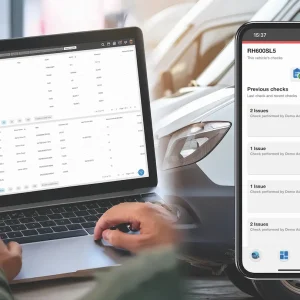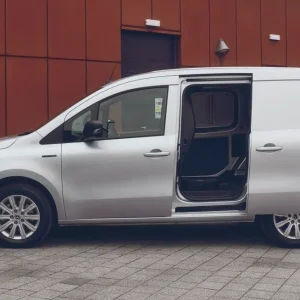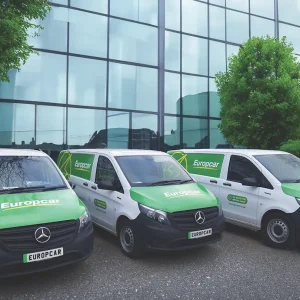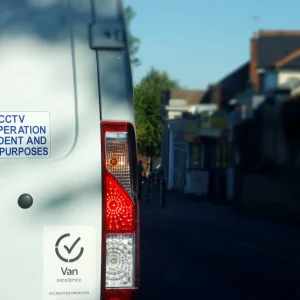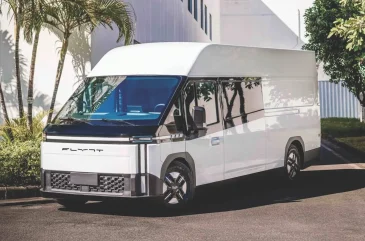
It appeared as a silhouette outline of a large van in my social media feed, prompting me to click through and try to find out a little more about another new name entering the electric van space.
A start-up van brand based in the Netherlands, FLYNT is preparing to launch a new 3.5t electric van, based on a purpose-built platform from Chinese manufacturer GAC Group, in 2026.
Founded by former BMW executive Daniel Kirchert, who helped the German car manufacturer get a foothold in China, the team behind FLYNT has a wide range of experience in the industry but it’s Kirchert’s life-long fascination with China which has led to the company’s creation.
“I had a childhood fascination for China, so I studied there in the 90s. I did my PhD on regional economics in China. I learned the language and I have a huge passion for this country,” Kirchert explains.
“More than 20 years ago, I helped BMW negotiate a joint venture in China. At that time, in China, the premium German brands sold a few hundred cars per year. I was responsible for sales and marketing, and the Chinese market was a huge growth story. The market exploded in the early 2000s and basically went from a few hundred cars to become the biggest market for all the German brands worldwide. BMW was also pioneering on electric vehicles, so I was involved in the ‘i’ brand story, and I was fascinated by this,” continues Kirchert.
Jumping ship to join Nissan to help with the Infiniti brand, Kirchert then attempted to launch a car start-up with fellow ex-BMW colleagues, getting renowned battery supplier CATL as a shareholder and lining up Taiwanese company Foxconn (of Apple iPhone-fame) as its production partner. After returning to Germany post-Covid pandemic, Kichert says he began noticing the importance of the commercial vehicle segment, its contribution to the economy but also its pollution. He also noted there was no affordable price tag for a fully electric solution. Using his experience in China, knowledge of the Chinese supply chain but also expertise in Europe, Kirchert set about creating a van suitable for Europe.
“All the Chinese brands going to Europe, they’re really struggling. For them it’s very hard to understand the fundamentals of the market; how to build up good service, how to gain the trust of the consumer, how to tell your story, how to do corporate sales, the residual value, the leasing and the subscription. [We thought] the consumer facing stuff should be a European team, and maybe also a European brand, but we can source the technology of the product in China,” he explains.
Kirchert likens the repackaging of the van with the consumer electronics or home appliances sector, where components are all sourced in China, but design and support are conducted at a local market level. However, he points out that not all Chinese products would have been suitable. After consulting with the market, including last mile delivery, craftsmen and the camper van segment, a clear picture developed on how the product should look. Kirchert partnered with GAC – a joint-venture partner of Toyota and Honda in China, which has developed into a top five domestic player. Although new to the light commercial vehicle sector itself, GAC, under its operating name of MiraCo Motor, has developed an autonomous platform for electric vehicles, and will use the skateboard design for the FLYNT van. While MiraCo focuses on robo last mile delivery for the Chinese market – working with online giants like Alibaba – it is hoped the size and cost efficiencies of the platform will lend themselves to the European market, with a focus on maximising usability.
“Our biggest version is 6m. If you compare it to the 6m [Mercedes] Sprinter, we have roughly two cubic metres more of volume. You can only get that, not with a conversion, but if you make a radical electric platform. You can see our front overhang, it’s absolutely the minimum required. The vehicle is about efficiency and cost. It’s about cost of ownership, not only the purchase price,” Kirchert says.
The van is looking to achieve a consumption rate of 20kWh per 100km, with a comprehensive warranty package and a minimum payload of 1.2 tonnes.
For the 4.25 tonne variant that will be significantly higher. There’s also a target of up to 500km of range. The vehicle should be in the market during 2026, with Germany and Norway the first markets. UK models will likely follow around one year later. Although there’s no pricing yet, Kirchert expects it to be on a par with the large diesel vans it is set to compete with.
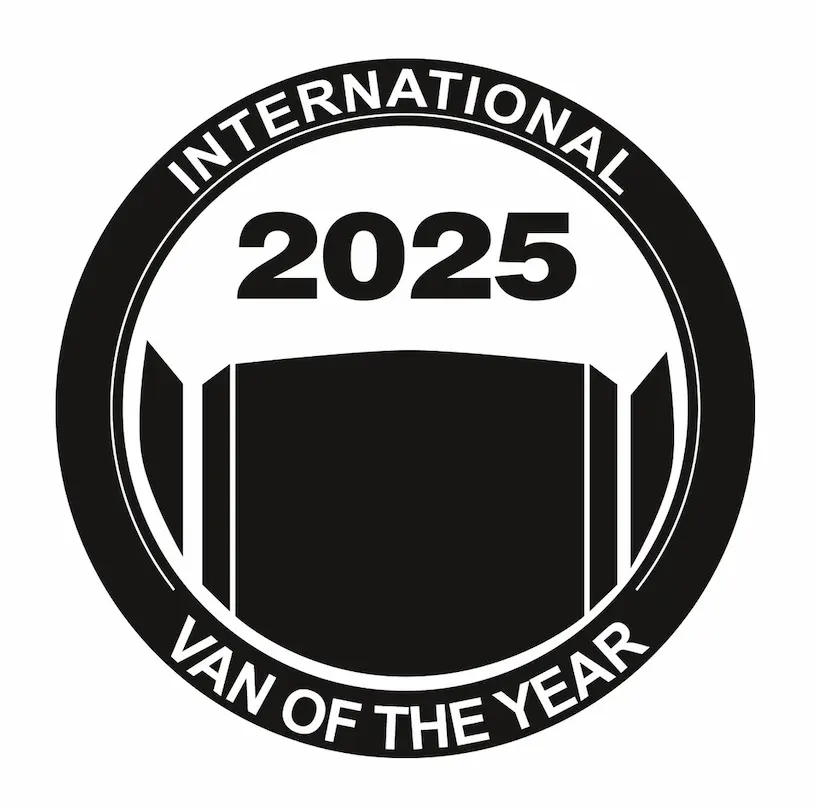
“Our goal is really for the small battery to be competitive with the diesel competitors in the market, not having to pay a 50% premium, like it is right now. I think this is really necessary for the normal craftsmen and the small company who does last mile delivery. For them, cost is everything. This product should win by offering a better TCO than a diesel version, an aggressive efficiency of 20kW, and the third thing is about all the maintenance and insurance classification, so certain parts of the body can be switched in very easily. We are adding some [features that are] normal options as standard, like a 360 camera with a very good software so that you can really see everything around the vehicle.”
Kirchert acknowledges that parts supply and aftersales support are vital in ensuring consumers’ confidence in a new brand. Part of the reasoning behind the central European location is to facilitate pan-European delivery of parts, partnering with strong local partners for network coverage.
“The killer for some who have tried out new brands is the downtime. One of the first things we did was talk with the big logistic companies for the parts supply. We will not do that ourselves, we will have a partner who hosts a European warehouse, and we want to have all parts available in Europe all the time, with an express delivery service into all of Europe overnight. It’s also important to have a good service network, we will work with independent service chains and we want to have 100 service points ready before we start to sell.”
Kirchert says FLYNT is not looking to reinvent the wheel, ambitions are restrained, the approach is pragmatic. It’s perhaps only the design and scale of the van itself that is ambitious. If there is any sector which could do with a shake-up and more competition, it’s arguably the large van segment.
About the van
Designed for the European fleet market from the ground-up, the FLYNT van is set to tackle the last mile delivery sector as well as regional applications.
It has a load volume of up to 16.5m³, with options as small as 8.7m³ and is said to have a payload of up to 1,630kg. It will be available with multiple drivelines: front-wheel drive, rear-wheel drive and all-wheel drive options.
A large 100kWh battery will top the line-up and give up to 500km of range, while rapid charging of up to 220kW using a DC fast charger will enable a battery top-up from 30% to 80% in just 20 minutes.
There will be three battery packs with the entry-level and mid-sized battery made from Lithium Iron Phosphate (LFP) battery packs, while the 100kWh option uses a Nickel Cobalt Manganese (NCM) battery pack. The battery will also support vehicle-to-grid functionality using an 800V architecture.
It will get Level 2 ADAS equipment and is said to be Level 4-ready.
On the inside, there’s an 8in driver cluster and a 12.8in display that has wireless Apple CarPlay and Android Auto. It’s also said to have a mobile office-like layout and “smart storage”.
Once Byton twice wise
It’s hard not to be cynical about another electric van start-up. They’re coming and going at regular intervals. But speaking with FLYNT founder Daniel Kirchert and co-founder Laura Peschke, I didn’t get the feeling that theirs would be another van brand with a “failed to launch” tombstone epitaph. For starters, Kirchert has been there before with car startup Byton, and is unlikely to make the same mistakes twice – there also, hopefully, won’t be another pandemic to scupper his plans either. The launch team has considerable expertise in the sector and more importantly direct experience of working in China and with Chinese suppliers.
Combined with knowledge gained from working with top OEMs like BMW and Nissan, this start-up seems more credible than most others. Will that mean it will succeed where others have failed? Only time will tell. But its measured approach to maximising efficiency, both for the electricity consumption of the vehicle but also the productivity of the operation, will likely win this new van some big customers. The question is, in such a competitive market that appears so apathetic towards electric vehicles, will that be enough?
George Barrow is the UK jury member for the prestigious International Van of the Year Award.

